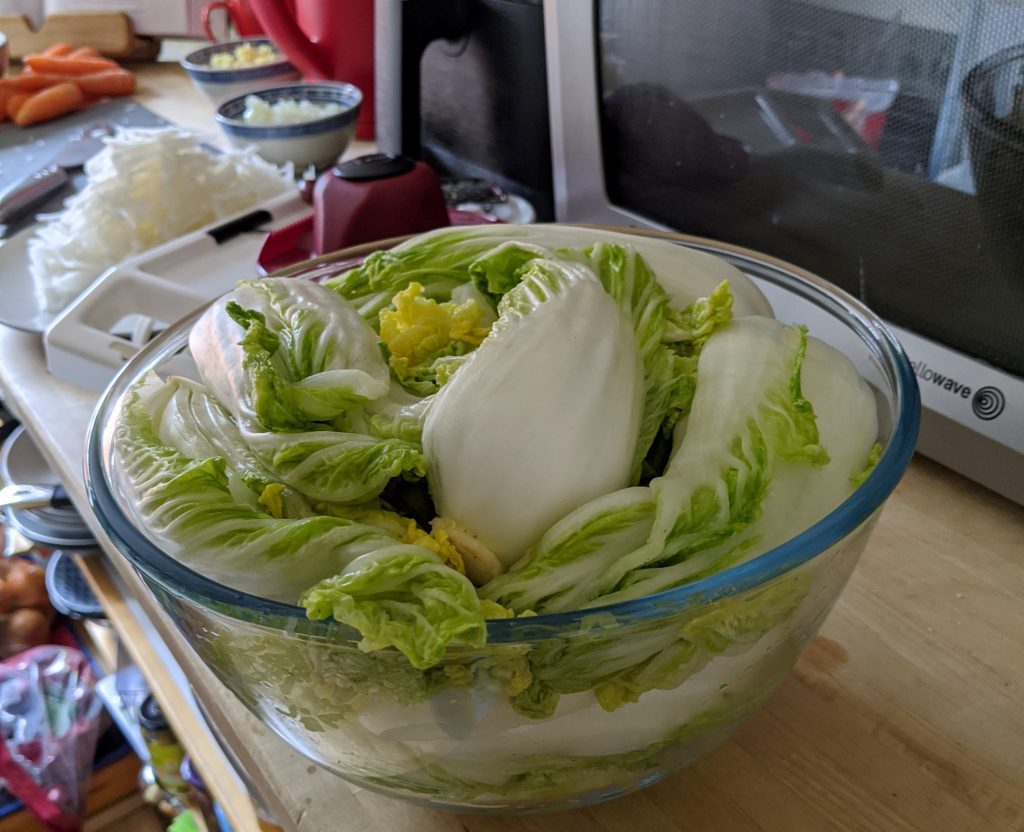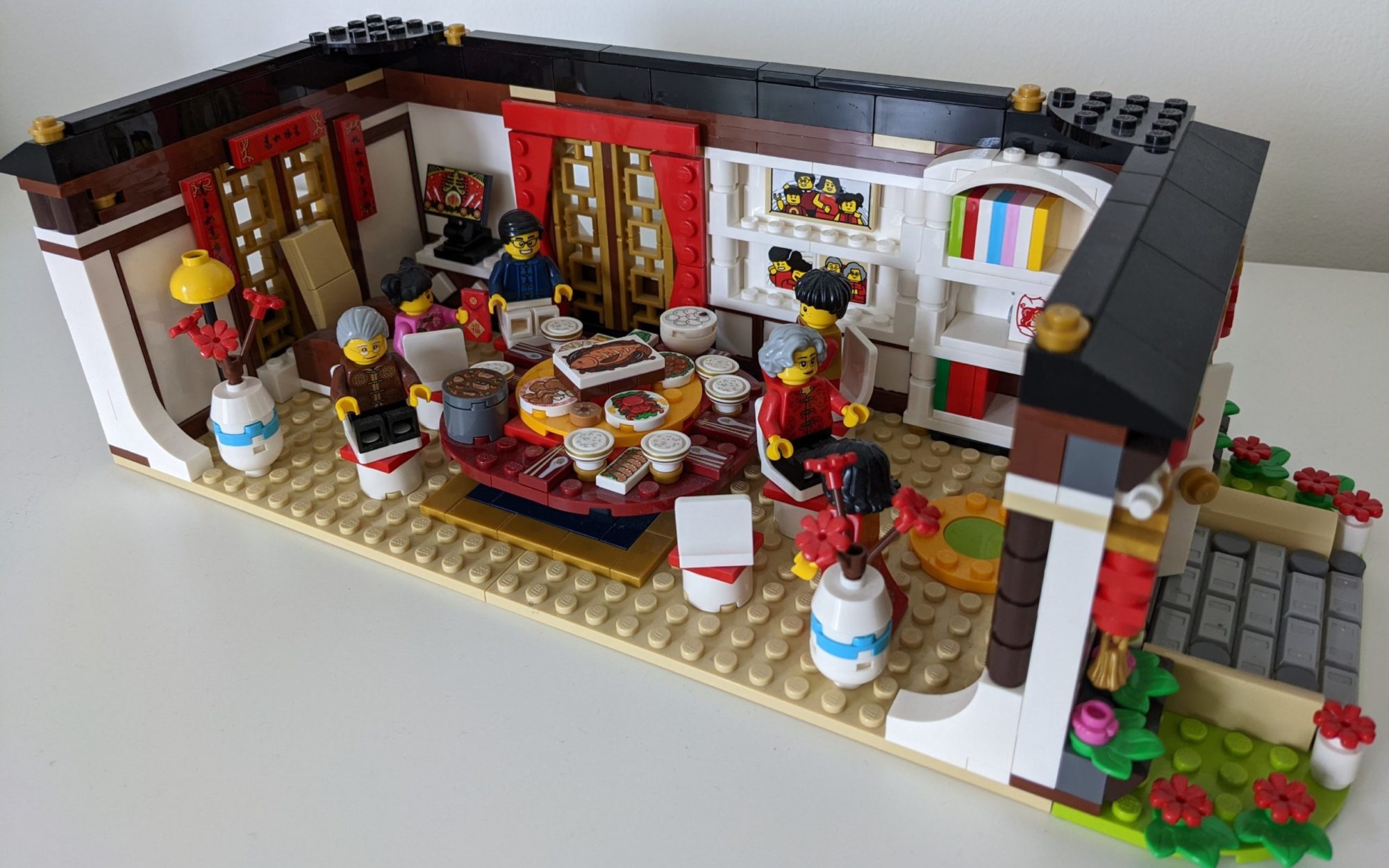My other half and I have been eating a lot of kimchi lately so I thought I’d give it a go myself. I don’t know much about Korean food but it’s definitely a cuisine that I’ve wanted to find out more about for a while as it’s always so delicious whenever I get a chance to eat it. My husband was recently given a copy of Maangchi’s Real Korean Cooking. As with any cookbooks he’s been given (including Snoop Doggs’ – the fried chicken looks delicious) , I’m usually the one getting the most out of them!
I had not come across Maangchi before but this book introduced me to her blog of her mouth-watering Korean home dishes. I was also pleased to read that she is a fellow gamer and that’s where her name came from.
Anyway, I decided to give her kimchee receipe a go once I found a few mason jars.

Pre-salting 
Salted
I used 4 small chinese cabbages as I was unable to get Napa cabbages that Maangchi recommended. As you’ll see, the salting process really does shrink the cabbages quite a bit. The 4 cabbages filled 4 x 950ml mason jars so hopefully that will help you work out how much you want to make. The rinsing off of the salt once you have salted the cabbage was quite a time consuming step and doing on a cold day with the running water didn’t help. But I tried to squeeze the water out of each quarter of the cabbage as much as possible because I didn’t want any excess water to be in my kimchi as I understood the fermenting process will draw any further water out from the cabbage as it is. I even used a clean tea towel to soak off any excess water once I squeezed the cabbage.
The kimchi paste was a bit fiddly and I probably could have used the food processor next time rather than hand mashing the garlic, ginger and onions. My newly purchased mandolin (and finger guard!) really speeded up the match-sticking process of the radish and carrots though.
The kimchi paste smelled so delicious as I was smearing it amongst each leaf I had to stop myself from devouring most it! I had made kimchi once before when I visited Korea years ago (only the smearing paste on the cabbage part mind), so I remembered that it was important to get the paste down to the stems of each leaf before folding the quarters back together again. Once they were in the jars, they were ready to ferment!

Kimchi paste 
What would I change next time? I’d probably think about using the food processor for some of the bits for the paste. I’d also think about pre-cutting the cabbages before smearing the paste on, although the leaves may not hold the paste as well when they’re cut. I’ll see once this batch has been tried and eaten!
Now we wait…
